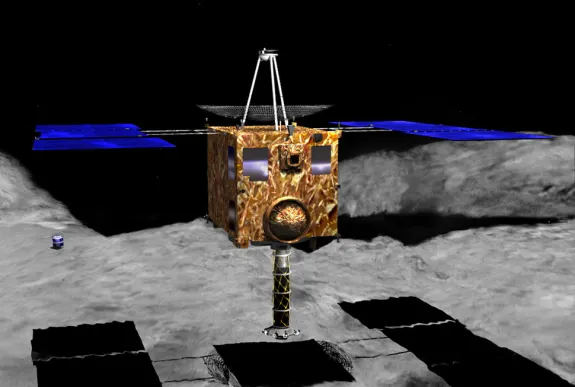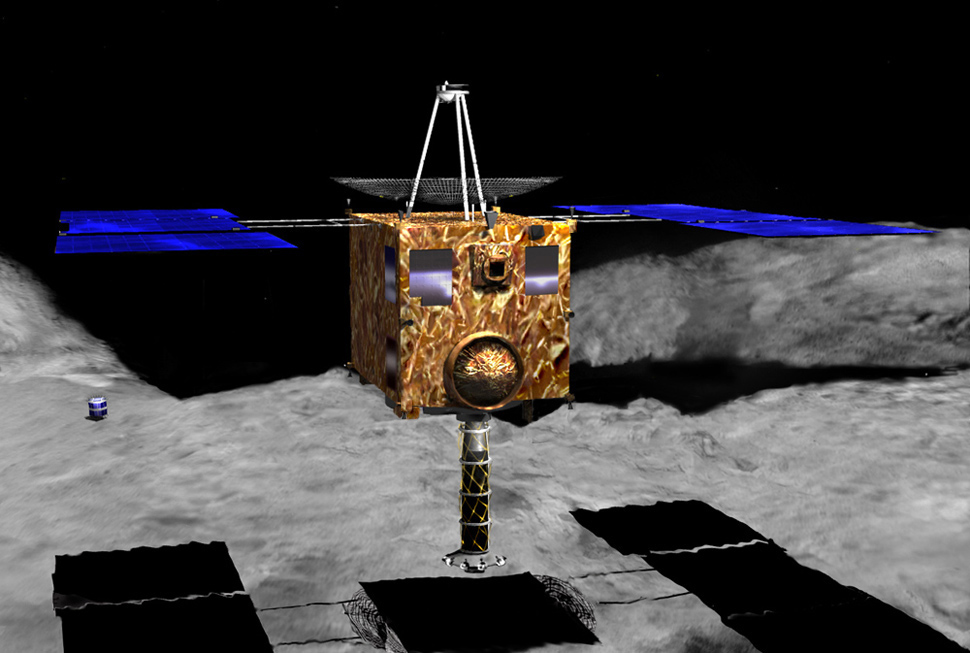
Hayabusa
About
The first mission to return a sample of material from the surface of a near-Earth object, the Japanese Hayabusa spacecraft, which also carried a mini-lander named MINERVA, was originally designed as a technology demonstration mission. One of the technologies it tested was an efficient ion propulsion system, which it used successfully during its two-year journey to asteroid Itokawa.
NASA's Jet Propulsion Laboratory assisted the Hayabusa mission by running some of the spacecraft-to-ground communications through its Deep Space Network of antennas, as well as providing the mission with navigators who worked with the Japanese navigation team to guide Hayabusa on the final leg of its journey home.



